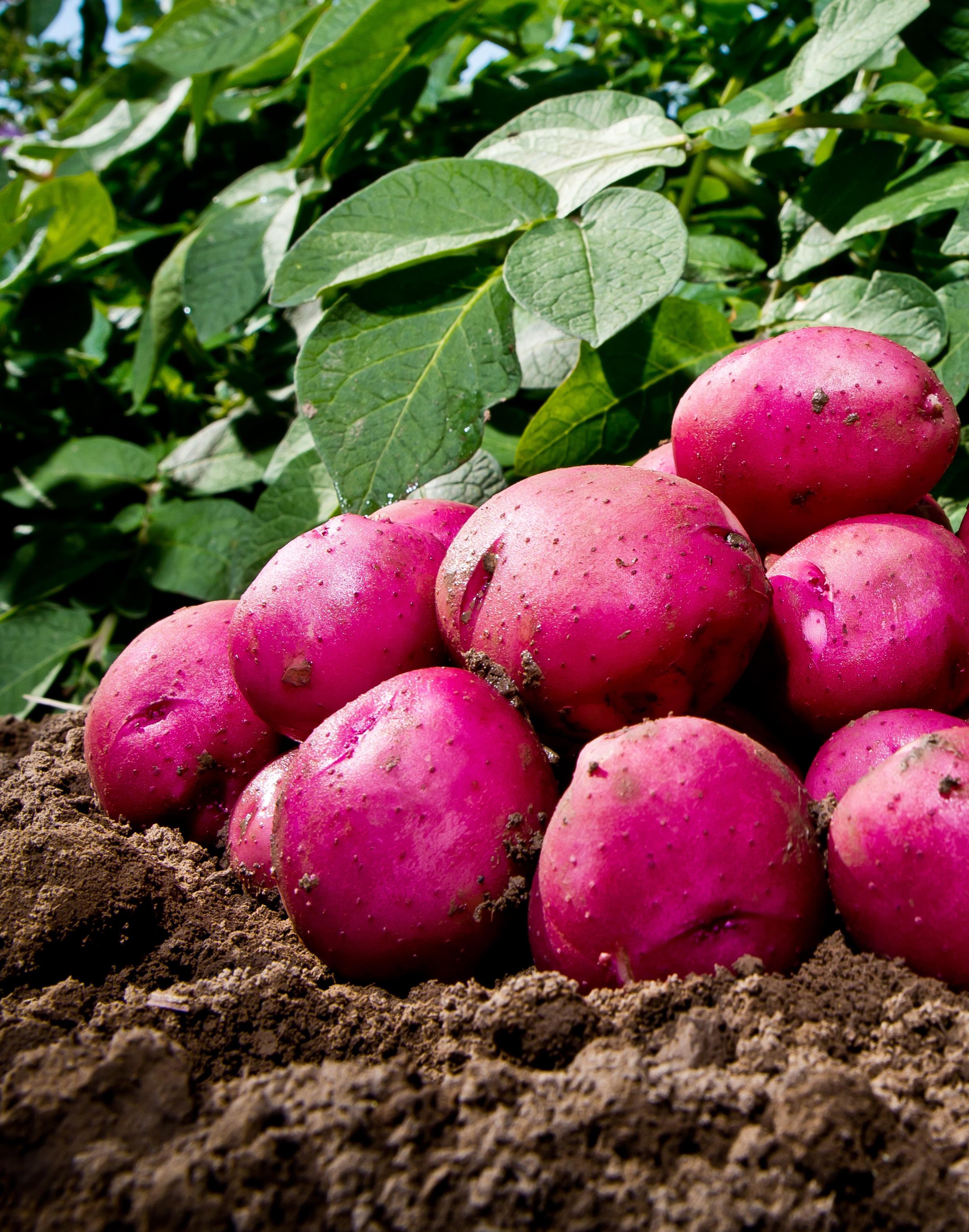

The Skagit River Valley

Home to some of the world’s best soil and the most iconic river delta in Western Washington
On any spring or summer day, you would most likely agree that the Skagit River Valley is just about the most beautiful place to be in the world. Surrounded by fields of potatoes, tulips, hay, berries, vegetables, and grains, this unique delta is home to a bounty unlike any other in the world. Located in northwestern Washington, the western portion of the basin flows out of the
foothills onto the largest delta in Puget Sound. It is split by Interstate 5, and is also arguably the most productive agricultural region in Western Washington. It is home to some of the best soil in the world, and includes approximately 60,000 acres of sub-tidal farmland. The Skagit River is home to all five salmon species, including the most abundant run in Puget Sound of the iconic Chinook.
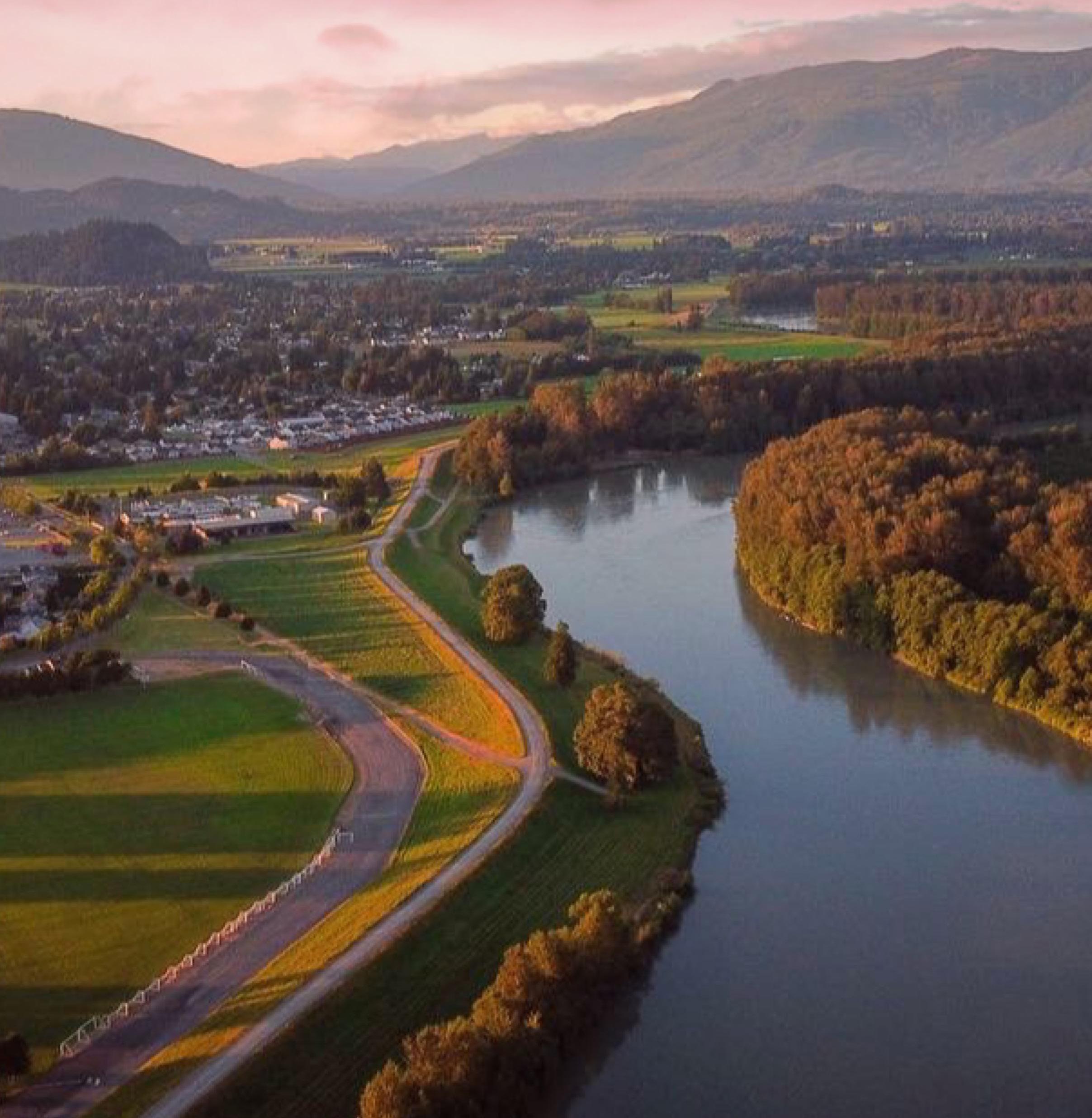
Balancing the protection of farmland with the protection of Chinook salmon has been the focus of farmers, landowners, tribes, and concerned citizens for more than 20 years. Years ago, it was determined that the solution to salmon recovery is salmon habitat restoration integrated with successful farming. Farms are the best neighbor to salmon-bearing streams, and in order to keep farms in this popular region, they must be financially sustainable. Farmers within Western Washington, and specifically the Skagit River basin, operate on generational land and thin margins. For most, the land has been held by family members since the late 1800’s.
Area Farm History
“Commercial farming in the Skagit Valley began in earnest in the 1880s after much ofthe Skagit River’s floodplain was walled off behind dikes, converting a maze of marshes, streams, and open channels into some of the most fertile farmland in Washington” (Historylink, 2021)
Immigrants from the eastern U.S., Scandinavia, and other Europeans quickly movedinto the region and transformed the marshes into
productive farms. They found success with oats, hay, barley, and potatoes. Later, vegetable seed, hops, green peas, strawberries, rhubarb, tulips, and daffodils became vital crops. The early dikes often failed during heavy rain events, and Skagit River flooding ravaged the area. In 1895 the Washington State Legislature allowed landowners to organize into diking districts,which were responsible for maintaining the dikes and protecting the farmland behindthem. Those same diking districts are operating today.

Land Management Today
Today, Skagit River basin farmers have partnered with tribes, state and federal water and wildlife agencies, and salmon advocates to protect Chinook salmon in the area. Years ago, it was determined that the solution to salmon recovery is salmon habitat restoration integrated with successful farming. The Ruckleshouse Process, concluded in 2010, found benchmarksfor protection of salmon and their habitat on Natural Resource Lands oflongterm commercial significance and ultimately led to the implementationof a successful Voluntary Stewardship Program, and other local efforts.
Voluntary Stewardship
The Voluntary Stewardship Program (VSP) offers counties and agricultural landowners farm-friendly options forprotecting fragile and/or hazardous natural resources —referred to as “critical areas” — in places whereagricultural activity is conducted. VSP uses financial incentives to voluntarily engage agricultural landowners with actions that protect critical areas such as wetlands and other fish and wildlife habitats.
Improved Farming Practices
Precision farming techniques have ensured that soil and crop health are superior, and water and fish are protected. Also, the land involved in Western Washington farm production is part of a scientific “rotation” of various crops that keeps land producing food in the most productive, economical, and environmentally-friendly way possible.
Improved Fish Passage
Not only have the dike and drainage districts improved their infrastructure, they have also made strides to replace old tidegates. Many have invested in more fish-friendly gates and better fish passage units.
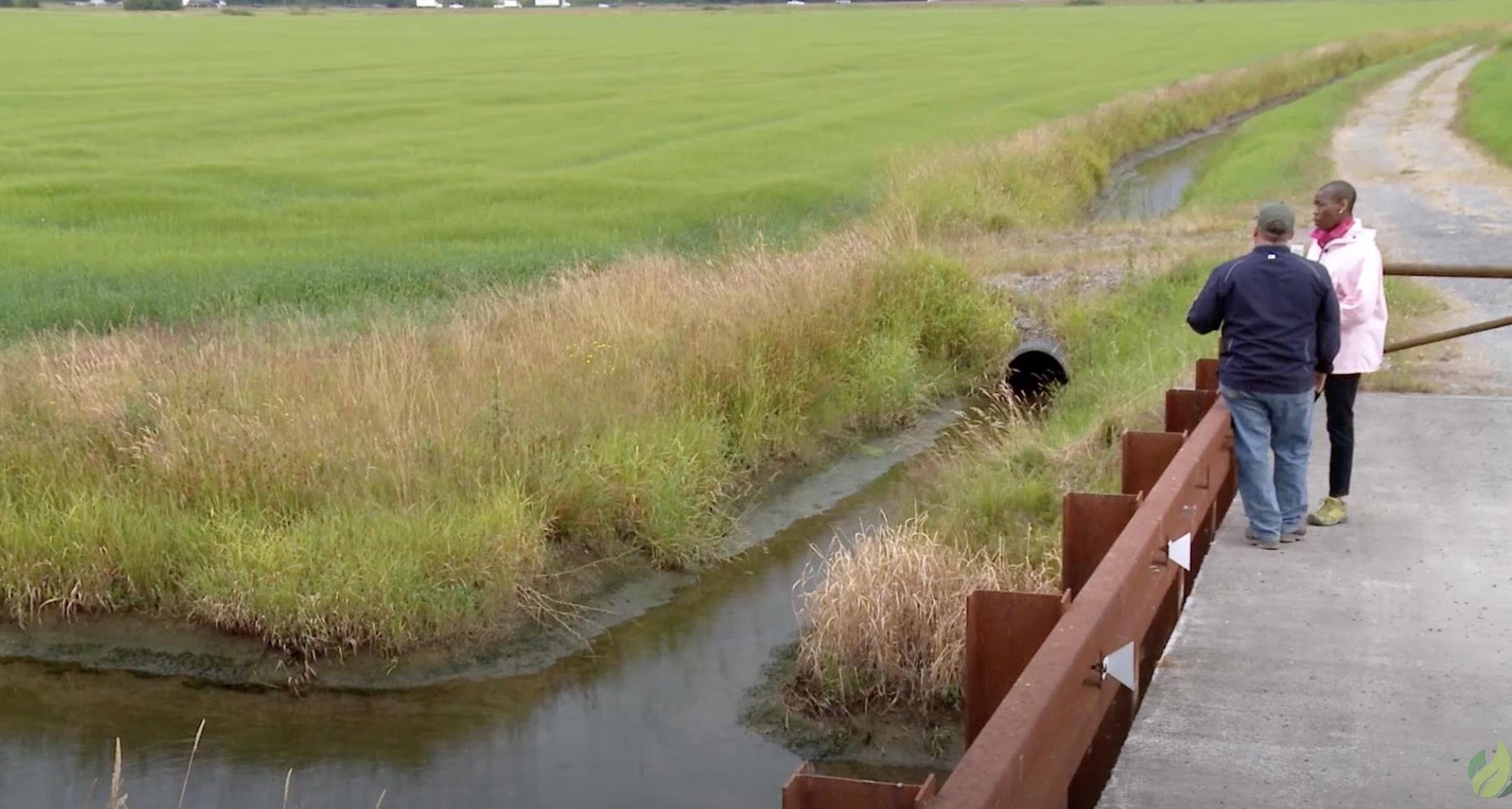
Places to visit in the area
The Skagit County Historical Museum 501 S 4th St, LaConner
Skagit Valley Tulip Festival (April) tulipfestival.org
Various Farmers Markets Schuh Farms* schuhfarmswa.com
Double N Potatoes* doublenpotatoes.com
Sakuma Brothers Farms* sakumabros.com
Calico Cupboard Cafe & Bakery* calicocupboardcafe.com
COA Mexican Eatery & Tequileria coaeatery.com/
*as seen on Washington Grown TV

They truly are special
Farming is in his blood.
For Darrin Morrison, growing potatoes isn’t just a job, it’s his heritage. “My grandfather was a Swedish immigrant, came to the United States in the late 1890s, ended up settling here in the Skagit Valley and the rest is history,” he explained to Washington Grown’s co-host Val Thomas-Matson.
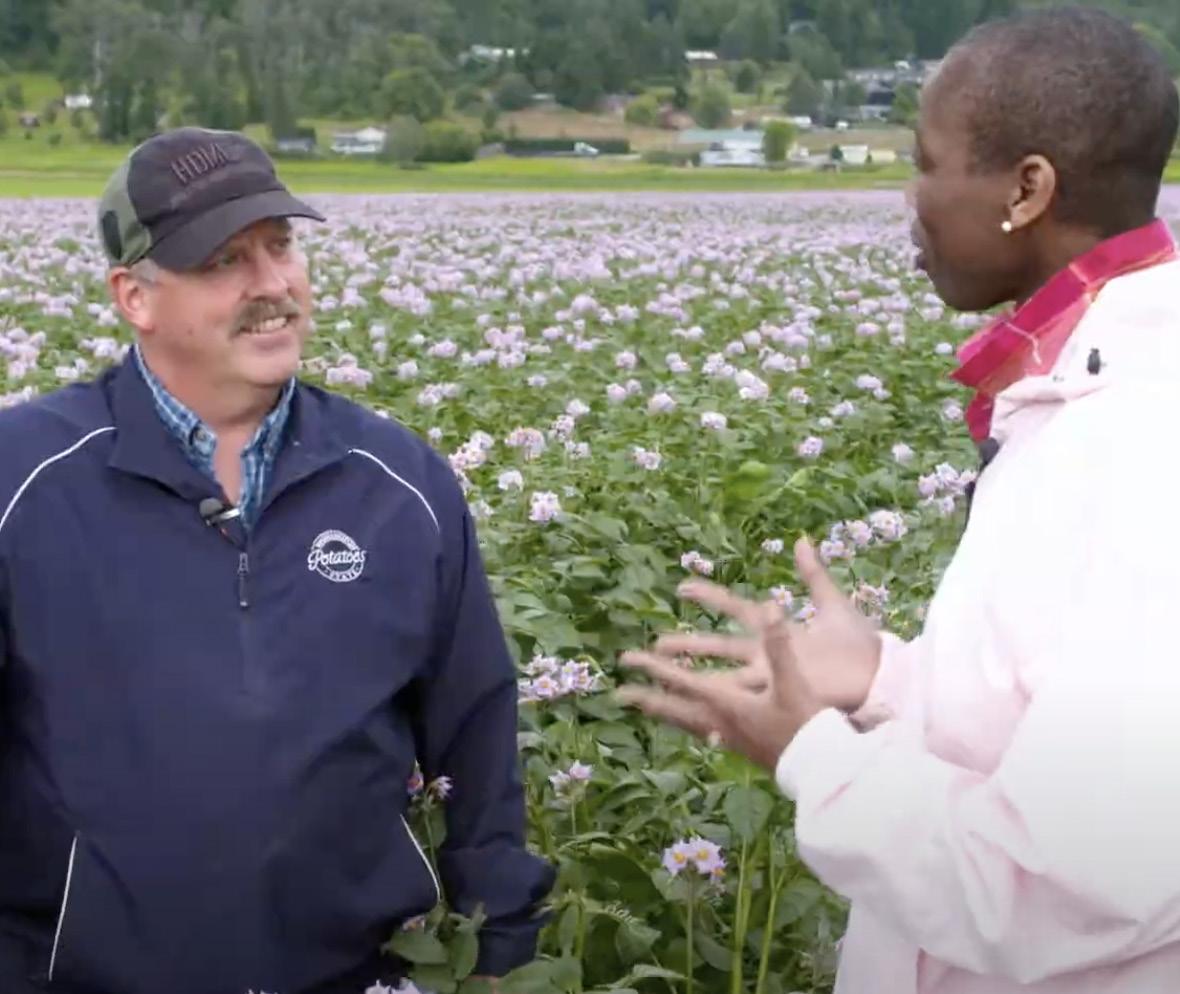
Specifically, Morrison and his family have been growing the iconic Skagit River valley red potatoes for generations. Like his neighbors, Morrison is able to grow some of the
most vibrant red potatoes on the planet. In fact, this region is one of the few in the world that can grow these unique spuds.
“You can grow potatoes in a lot of different climates, but in the Skagit Valley, it’s a pretty remarkable area, agriculturally it’s a maritime climate, so it doesn’t get very hot and it doesn’t get very cold,” he said. “It’s a very consistent type of temperature, and I think the soil temperature stays cooler than it would say in a desert climate or where you get into the hundreds and the 90s. Our red color of our potatoes seem to be even more vibrant.”

While the Skagit area grows great potatoes, farmers do face challenges.

“Water is a big challenge for farming in the Skagit Valley,” he said, “knowing we need it for the crops, but we also need it to be able to move it off the field in order to farm it, so if the soil is too wet, the roots don’t like it, you’re unable to even drive a tractor across and that kind of thing.”
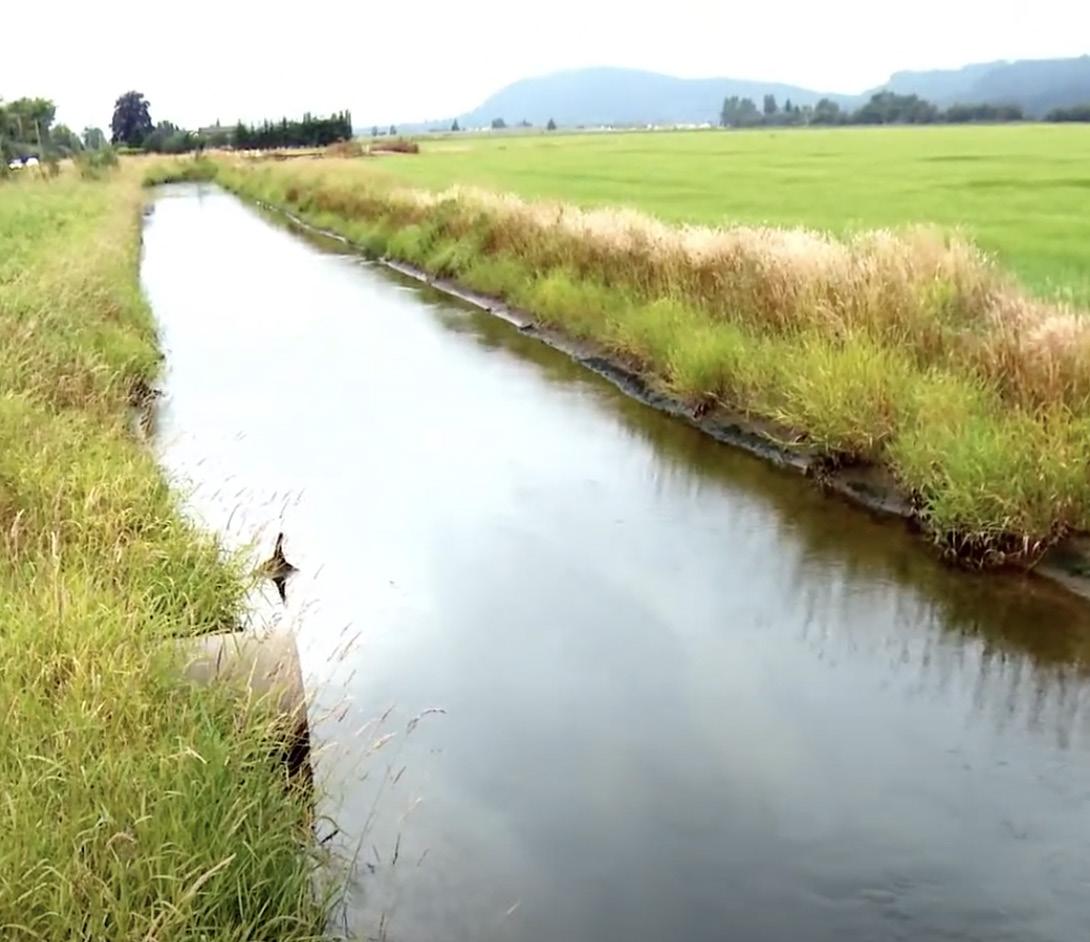
He explained that to manage all of the water, they use a system of drainage canals.
“The tide is out and there’s a series of gates that open up and allow all this water that’s
collected from rain and running off of all those mountains back there, coming down through the farmland, and now it’s exiting out, going through a gate and going right into the Puget Sound. During the summer months, we can reverse this process and actually maintain and hold the water back instead of letting it go and use it for crops. It’s a dual purpose, but without the drainage infrastructure, we aren’t farming. They’re not building roads. We’re not building homes and the whole economy is connected to that whole thing.
What’s the one thing that he would love people to know about farming?

“That we’re here, that we’re doing this. Most people don’t have a clue when they come up here, and we’re only 60 miles from Seattle and downtown Seattle, and most of them drive right in front of our farm on the interstate and really don’t appreciate where their food comes from or even just know. We all work really hard to ensure that we have safe and healthy food and food that tastes good, and yet we want to return the favor to the land that produce it for us. We’re here taking care of that land too, and I think if you asked any farmer here, that’s the number one thing. We want to feel that people recognize what we’re doing here is a benefit to a lot of people.”
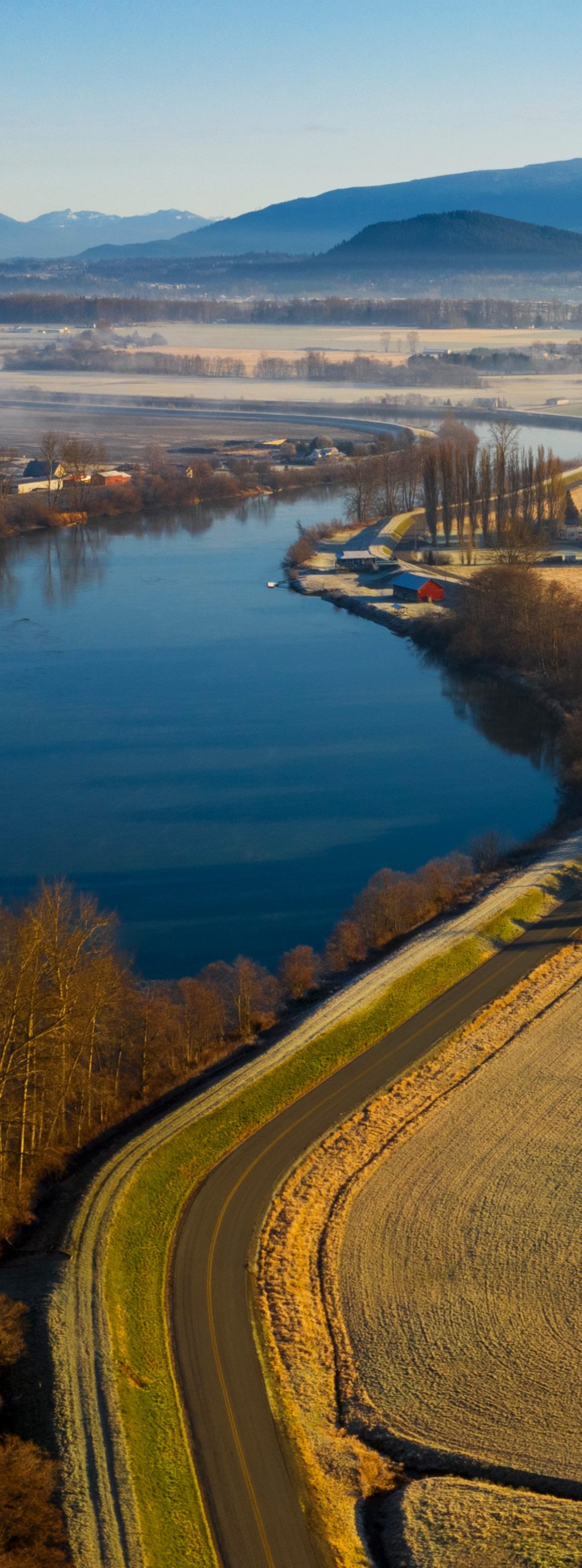
To watch more of this interview with Val and Darrin, visit us online!
wagrown.com




Watch the show online or on your local stations
KSPS (Spokane)
Mondays at 7:00 pm and Saturdays at 4:30 pm ksps.org/schedule/
TV & ONLINE
KWSU (Pullman)
Fridays at 6:00 pm nwpb.org/tv-schedules/
KTNW (Richland )

Saturdays at 1:00 pm nwpb.org/tv-schedules

KBTC (Seattle/Tacoma)
Saturdays at 6:30 am and 3:00 pm kbtc.org/tv-schedule/
KIMA (Yakima) / KEPR (Pasco) / KLEW (Lewiston)
Saturdays at 5:00 pm kimatv.com/station/schedule / keprtv.com/station/schedule klewtv.com/station/schedule
KIRO (Seattle) Check local listings kiro7.com
NCW Life Channel (Wenatchee) Check local listings ncwlife.com
RFD-TV
Thursdays at 12:30 pm and Fridays at 9 pm (Pacific)
*Times/schedules subject to change based upon network schedule. Check station programming to confirm air times.

Tom Douglas’ Smashed Greek Potatoes
90 minutes
You can use any variety of small thin-skinned potatoes in this recipe. Ideally, the potatoes should be about the size of a golf ball or a little smaller. Dried Greek oregano is the most fragrant.
Preheat the oven to 450°F.
Put the potatoes in a roasting pan large enough to hold them in a single layer, and roast them until they are just tender, about 40 to 45 minutes, depending on their size.
When the potatoes feel tender, remove the roasting pan from the oven and place it on top of the stove or on another heat-proof surface.
Using the flat bottom of a sturdy china mug, press down on and flatten each potato, one at a time, right in the roasting pan. A smashed potato should be about ½-inch thick. The potato skin will break, showing some of the white flesh, but the potato should still more or less retain its round shape. Don’t worry if a few of the potatoes break up and fall apart. Repeat until all the potatoes have been smashed.
Grocery List


3 pounds small red potatoes, washed and dried but not peeled

½ cup plus 1 tablespoon
extra virgin olive oil
Kosher salt and freshly ground black pepper
1 tablespoon dried Greek oregano
1 tablespoon minced garlic
Drizzle ¼ cup of the oil over the potatoes, season generously with salt and pepper, and return them to the oven. Roast the potatoes until they are browned on the bottom, about 25 minutes, then remove them from the oven and turn them over with a large spatula.
Drizzle another¼ cup oil over the potatoes and return them to the oven. Roast the potatoes until they are browned on the second side, about 25 minutes more, then remove the pan from the oven.
Scatter the oregano and garlic over the surface, season again with salt and pepper, and drizzle them with the remaining 1 tablespoon of oil.
Toss the potatoes with the spatula to distribute the seasonings evenly, then return them to the oven for 5 more minutes. (Roasting time after the potatoes are smashed is about 55 minutes, total time is about 1 hour plus 35 minutes)
Use a spatula to transfer the potatoes to a large platter. Serve immediately.
Serves 6-8
ENTER TO WIN!
Visit our website and sign up to be entered into a drawing for a $25 gift certificate to the Carlisle Room restaurant!

*Limit one entry per household

ACROSS
5.Farming practices farmers use to improve the environment
8.A farming technique that ensures soil and crop health are superior
9.A popular flower grown in the Skagit River valley
10.A county that grows red potatoes in Washington
11.What you do to potatoes to make Tom Douglas’ dish
12.The process of growing food
13.What scientists conduct to develop better potatoes
DOWN

1.The salmon species Washington farmers and tribes are working to protect
2.A liquid all crops need to grow
3.Where many immigrants left to move to the Skagit River valley region
4.Devices used to control tidal river water
6.What farmers in Skagit County need to manage water on their land
7.An area of low, flat land shaped like a triangle, where a river splits and spreads out into several branches before entering the sea.
VegOut

The Carlile Room shines a spotlight on vegetables from local growers.
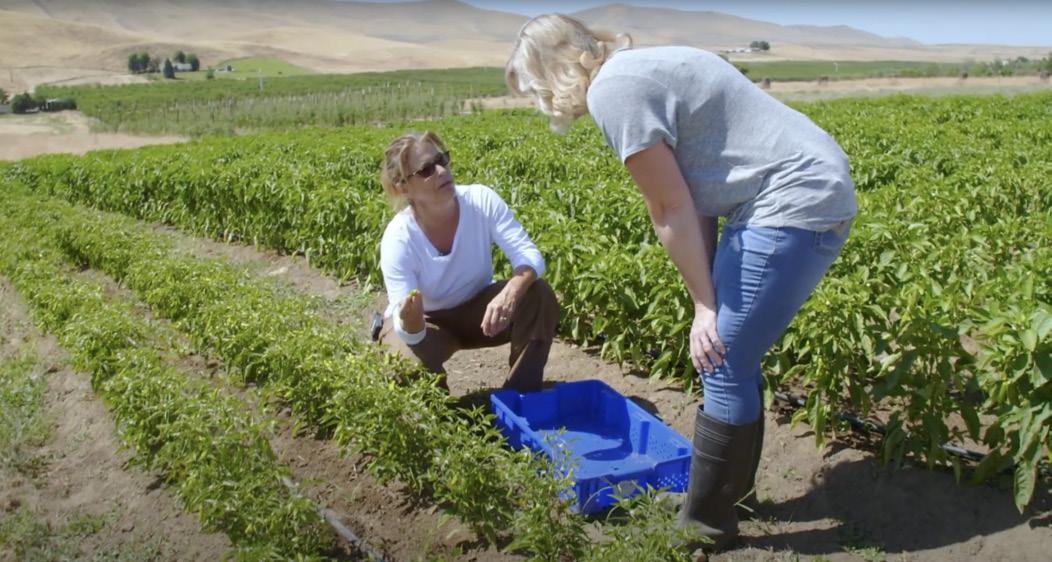
When the last notes of music fade out at the Paramount Theater in Seattle, concert-goers file out the doors and are greeted by the neon sign across the street bearing a familiar name: The Carlile Room.
Chef and restauranteur Tom Douglas was influenced by musicians such as local singer Brandi Carlile, for whom the restaurant is named. Inside, hungry diners find an unlikely pairing: a rock-and-roll bar vibe partnered with a menu full of vegetable dishes that steal the show.

“I often say to my chefs, if you have a perfect product, what you need to do is get out of the way and let it shine,” said Douglas. “Throughout the seasons of the year, we support all of our friends who are farmers. We’re very veg-centric.”
In Washington state, foodies are blessed to be surrounded by multitudes of “perfect products”, many of which find a home on the Carlile Room menu. Fresh vegetables, fruits, pro-
teins and dairy are produced all over the state, so professional chefs and amateur home cooks have a long list of high quality, fresh ingredients to choose from.
“It’s just really a treat to be in the middle of this,” Douglas continued, gesturing around as though to indicate the whole state of Washington. “I used to think, ‘Wow we have great salmon and great crab,’ but really, we have great everything: from the wine we’re drinking, to the asparagus, to the potatoes.”
Many of the vegetables served at the Carlile Room are grown by Tom Douglas' wife Jackie at the family's own farm in Prosser, WA.Farmers in Skagit County know a thing or two about growing flowers and being good stewards of the land. Jesalyn Pettigrew is the farmer behind the Mossy Gate Flower Farm, specializing in beautiful flowers that you have probably admired at your local Haggen Food Grocery Store.

Skagit County farmers know about conservation
One of the major elements that set Mossy Gate apart from the other regional cut flower farms is the use of seasonal, native plants and her work restoring blackberry-ridden locations into usable spaces. And, when this single mom of two isn’t working the land, she spends time on voluntary stewardship that helps make her agricultural land more sustainable and protects the water and soil in Skagit County. She does this by planting cover crops — crops planted in between growing seasons to protect the soil in what would otherwise be an empty field.
“We work very closely with the Skagit Conservation District to make sure that we are doing all we can to protect our land and the land around us. When we work together, we can get so much more accomplished than when we try to go it alone,” said Pettigrew.
Skagit County is one of the 27 counties in Washington state that are part of the Voluntary Stewardship Program or, as it is often referred to, VSP. Each participating county sets goals to ensure the health and durability of local natural resources and farmland. The program then engages agricultural landowners to help them achieve those goals.

VSP is a different kind of program that is incentive-based rather than regulatory. Farmers and landowners choose to be part of the projects and volunteer to do the work with support from the county or their local conservation district, making them active partners in stewardship.
The counties’ goals focus on areas that are critical in keeping the land, water, and food supply safe for future generations of people, plants, and animals.
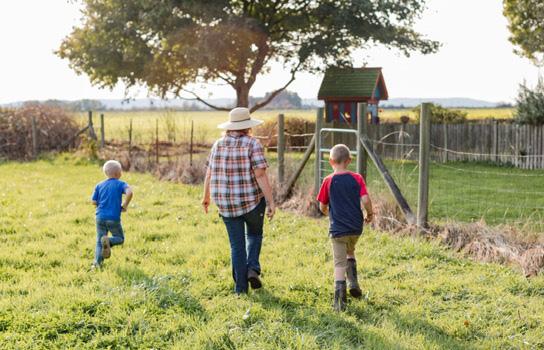
VSP brings landowners and counties together to practice conservation by planting trees along streams and rivers to stabilize banks and giving out cover crop seeds to farmers like Pettigrew. Cover crops help keep soil on the field where it belongs, rather than being eroded away by rain and wind. They also improve soil health, increase water retention, and reduce weeds and pests. And that’s not all — cover crops help infuse the ground with nitrogen during the winter, which may minimize fertilizer requirements in the spring.
Pettigrew planted 300 pounds of organic rye and vetch (a wild pea) mix on her lands in 2021, some that she received with the help of the Skagit Conservation District. “We almost didn’t get it in the ground last year before the rain started to fall year since my crops grow late into the fall,” Pettigrew said, “But, I am so glad that we did!”
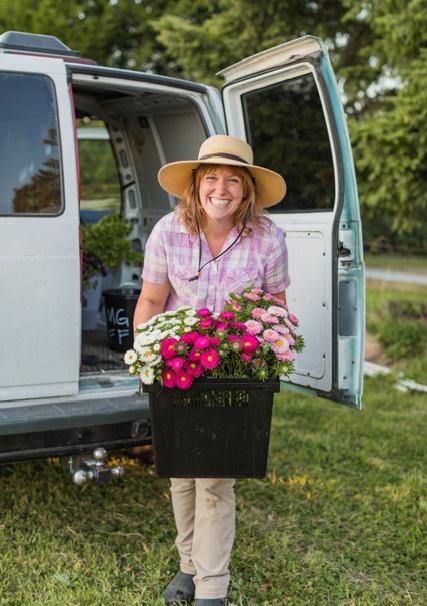
To learn more about VSP and see if your county is a member, you can visit scc.wa.gov/vsp.
To learn more about this farm, visit mossygateflowerfarm.com
Q&A
with Executive Director,
Executive Director,
Northeast Washington is growing rapidly, and community development is happening at an unprecedented pace. What effect does urban sprawl have on farmers around the Skagit?



Urban sprawl drives up property values and makes it harder for farmers to pay the taxes. When farmers make the decision to sell and leave, then we have fewer farmers buying diesel, fewer farmers getting their tractors fixed, etc. It’s what economists would call the multiplier effect - those dollars start leaving the area. And then those implement dealers will pick up and leave, and then the farmers that are left will have to call Whatcom County to get their tractor fixed, or go down to Oregon or somewhere else. And that’s what we’re worried about. It’s harder and harder to get the supplies and the parts they need. The one thing that
keeps this agricultural community viable is the farmland. That farmland gives the farmers the elasticity to respond to a lot of changes, and helps keep this industry and all the components here.
What are the benefits of having open space in agriculture instead of in development?
Farmland produces food and fiber, as we know. This land is our domestic source of food; the Skagit is a regional foodshed for Seattle and beyond. It is providing a wildlife habitat. Skagit County in particular has thousands of snow geese, thousands of waterfowl, raptors, ducks. So we support a very strong bird population. Agricultral land benefits water quality: it’s absorbing water. It’s filtering water. It’s providing open space. And it's doing it all naturally - with a little help from our farmers.
Allen Rozema Skagitonians to Preserve Farmland